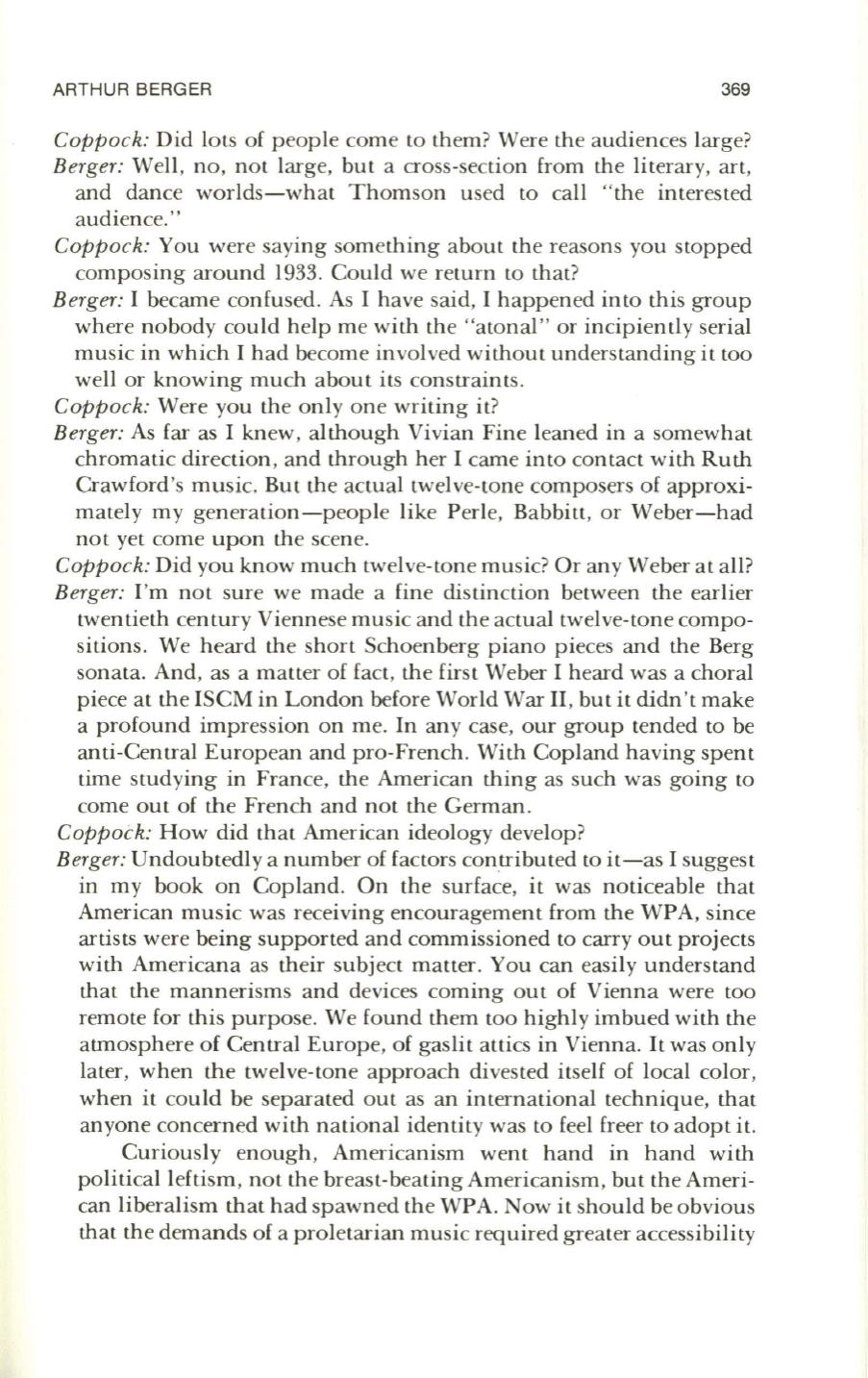
ARTHUR BERGER
369
Coppock:
Did lots of people come to them? Were the audiences large?
Berger:
Well, no, not large, but a cross-section from the literary, art,
and dance worlds-what Thomson used to call "the interested
audience. "
Coppock:
You were saying something about the reasons you stopped
composing around 1933. Could we return to that?
Berger:
I became confused. As I have said, I happened into this group
where nobody could help me with the "atonal " or incipiently serial
music in which I had become involved without understanding it too
well or knowing much about its constraints.
Coppock:
Were you the only one writing it?
Berger:
As far as I knew, although Vivian Fine leaned in a somewhat
chromatic direction, and through her I came into contact with Ruth
Crawford's music. But the actual twelve-tone composers of approxi–
mately my generation-people like Perle, Babbitt, or Weber-had
not yet come upon the scene.
Coppock:
Did you know much twelve-tone music? Or any Weber at all?
Berger:
I'm not sure we made a fine distinction between the earlier
twentieth century Viennese music and the actual twelve-tone compo–
sitions. We heard the short Schoenberg piano pieces and the Berg
sonata. And, as a matter of fact, the first Weber I heard was a choral
piece at the ISCM in London before World War II, but it didn't make
a profound impression on me. In any case, our group tended to be
anti-Central European and pro-French. With Copland having spent
time studying in France, the American thing as such was going to
come out of the French and not the German.
CoppoCk:
How did that American ideology develop?
Berger:
Undoubtedly a number of factors contributed to it-as I suggest
in my book on Copland. On the surface, it was noticeable that
American music was receiving encouragement from the WPA, since
artists were being supported and commissioned to carry out projects
with Americana as their subject matter. You can easily understand
that the mannerisms and devices coming out of Vienna were too
remote for this purpose. We found them too highly imbued with the
atmosphere of Central Europe, of gaslit attics in Vienna.
It
was only
later, when the twelve-tone approach divested itself of local color,
when it could be separated out as an international technique, that
anyone concerned with national identity was to feel freer to adopt it.
Curiously enough, Americanism went hand in hand with
political leftism, not the breast-beating Americanism, but the Ameri–
can liberalism that had spawned the WPA. Now it should be obvious
that the demands of a proletarian music required greater accessibility


